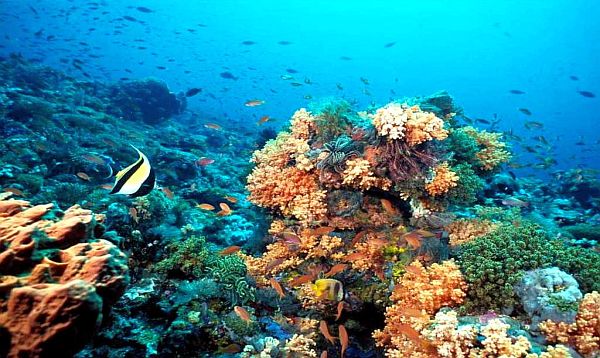Puerto Morelos, Mexico - A 40-mile stretch of coral reef, about 20 miles south of Cancún off the coast of Puerto Morelos, Mexico, is one of Mexico's most popular snorkeling attractions. It also serves a vital purpose beyond drawing tourists. Like all reefs, it provides a buffer for the coast, protecting nearby beaches from brutal waves and storms.
And so the beachside businesses that rely on the reef have decided to protect the coral as they would any other vital asset: with insurance. As Fast Company reports, the reef now has its own insurance policy, the first-ever policy of its kind.
 |
Businesses in Puerto Morelos and Cancún pay the premiums for the Reef & Beach Resilience and Insurance Fund, and if the reef gets damaged, the insurance company will pay to help restore it. It's not just an altruistic move. By protecting the Puerto Morelos reef, nearby businesses are protecting themselves.
According to The Nature Conservancy, which designed the insurance policy, coral reef tourism generates around $36 billion for businesses around the world each year. Perhaps even more importantly to coastal businesses, reefs protect $6 billion worth of built capital (anything human-made) annually.
When a storm hits, the insurance company will pay out a claim in 10 days, according to Fast Company, providing an immediate influx of cash for urgent repair. (The insurance policy is tied to the event of a storm, not the damage, since it would be hard to immediately quantify the economic damage to a reef.) The corals that break off the reef can be rehabilitated at a nursery and reattached, but they have to be collected immediately. Waiting months for an insurance payout wouldn't help if all the damaged corals have already floated away.
The insurance policy is one of many new initiatives designed to rehabilitate and protect endangered coastal ecosystems that we now know are vital to buffering the coast from storm surges and strong waves. Coral reefs aren't the only protective reefs: In the eastern and southern coastal U.S., some restaurants have started donating oyster shells to help rebuild oyster reefs offshore as a storm protection and ecosystem rehabilitation measure.
Considering the outsized role reefs play in coastal protection, more insurance policies may be coming to ecosystems elsewhere in the world. Hopefully.
Original article


